Messier object
Astronomical objects catalogued by Charles Messier From Wikipedia, the free encyclopedia
The Messier objects are a set of 110 astronomical objects catalogued by the French astronomer Charles Messier in his Catalogue des Nébuleuses et des Amas d'Étoiles (Catalogue of Nebulae and Star Clusters). Because Messier was interested only in finding comets, he created a list of those non-comet objects that frustrated his hunt for them. This list, which Messier created in collaboration with his assistant Pierre Méchain, is now known as the Messier catalogue. The Messier catalogue is one of the most famous lists of astronomical objects, and many objects on the list are still referenced by their Messier numbers.[1] The catalogue includes most of the astronomical deep-sky objects that can be easily observed from Earth's Northern Hemisphere; many Messier objects are popular targets for amateur astronomers.[2]
 All Messier objects | |
| Alternative names | Messier Catalogue |
|---|---|
| Survey type | Astronomical catalogue |
| Named after | Charles Messier |
| Published | 1774 (preliminary version) |
| Related media on Commons | |
A preliminary version of the catalogue first appeared in 1774 in the Memoirs of the French Academy of Sciences for the year 1771.[3][4][5] The first version of Messier's catalogue contained 45 objects, which were not numbered. Eighteen of the objects were discovered by Messier; the rest had been previously observed by other astronomers.[6] By 1780 the catalogue had increased to 70 objects.[7] The final version of the catalogue containing 103 objects was published in 1781 in the Connaissance des Temps for the year 1784.[8][4] However, due to what was thought for a long time to be the incorrect addition of Messier 102, the total number remained 102. Other astronomers, using side notes in Messier's texts, eventually filled out the list up to 110 objects.[9]
The catalogue consists of a diverse range of astronomical objects, from star clusters and nebulae to galaxies. For example, Messier 1 is a supernova remnant, known as the Crab Nebula, and the great spiral Andromeda Galaxy is M31. Further inclusions followed; the first addition came from Nicolas Camille Flammarion in 1921, who added Messier 104 after finding Messier's side note in his 1781 edition exemplar of the catalogue. M105 to M107 were added by Helen Sawyer Hogg in 1947, M108 and M109 by Owen Gingerich in 1960, and M110 by Kenneth Glyn Jones in 1967.[10]
Lists and editions
Summarize
Perspective

The first edition of 1774 covered 45 objects (M1 to M45). The total list published by Messier in 1781 contained 103 objects, but the list was expanded through successive additions by other astronomers, motivated by notes in Messier's and Méchain's texts indicating that at least one of them knew of the additional objects. The first such addition came from Nicolas Camille Flammarion in 1921, who added Messier 104 after finding a note Messier made in a copy of the 1781 edition of the catalogue. M105 to M107 were added by Helen Sawyer Hogg in 1947, M108 and M109 by Owen Gingerich in 1960, and M110 by Kenneth Glyn Jones in 1967.[11] M102 was observed by Méchain, who communicated his notes to Messier. Méchain later concluded that this object was simply a re-observation of M101, though some sources suggest that the object Méchain observed was the galaxy NGC 5866 and identify that as M102.[12]
Messier's final catalogue was included in the Connaissance des Temps pour l'Année 1784 [Knowledge of the Times for the Year 1784], the French official yearly publication of astronomical ephemerides.[8][4]
Messier lived and did his astronomical work at the Hôtel de Cluny (now the Musée national du Moyen Âge), in Paris, France. The list he compiled contains only objects found in the sky area he could observe: from the north celestial pole to a celestial latitude of about −35.7° . He did not observe or list objects visible only from farther south, such as the Large and Small Magellanic Clouds.[13]
Observations
Summarize
Perspective
The Messier catalogue comprises nearly all of the most spectacular examples of the five types of deep-sky object – diffuse nebulae, planetary nebulae, open clusters, globular clusters, and galaxies – visible from European latitudes. Furthermore, almost all of the Messier objects are among the closest to Earth in their respective classes, which makes them heavily studied with professional class instruments that today can resolve very small and visually significant details in them. A summary of the astrophysics of each Messier object can be found in the Concise Catalog of Deep-sky Objects.[14]
Since these objects could be observed visually with the relatively small-aperture refracting telescope (approximately 100 mm ≈ 4 inches) used by Messier to study the sky from downtown Paris, they are among the brightest and thus most attractive astronomical objects (popularly called deep-sky objects) observable from Earth, and are popular targets for visual study and astrophotography available to modern amateur astronomers using larger aperture equipment. In early spring, astronomers sometimes gather for "Messier marathons", when all of the objects can be viewed over a single night.[15][16]
Messier objects
Other
| Messier number | NGC/IC number | Common name | Image | Object type | Distance (kly) | Constellation | Apparent magnitude | Apparent dimensions | Right ascension | Declination |
|---|---|---|---|---|---|---|---|---|---|---|
| M1[17] | NGC 1952 | Crab Nebula |  |
Supernova remnant | 4.9–8.1 | Taurus | 8.4 | 420″ × 290″ | 05h 34m 31.94s | +22° 00′ 52.2″ |
| M2[18] | NGC 7089 | – |  |
Globular cluster | 33 | Aquarius | 6.5 | 16' | 21h 33m 27.02s | −00° 49′ 23.7″ |
| M3[19] | NGC 5272 | – |  |
Globular cluster | 33.9 | Canes Venatici | 6.2 | 18' | 13h 42m 11.62s | +28° 22′ 38.2″ |
| M4[20] | NGC 6121 | Spider Globular Cluster |  |
Globular cluster | 7.2 | Scorpius | 5.6 | 26' | 16h 23m 35.22s | −26° 31′ 32.7″ |
| M5[21] | NGC 5904 | Rose Cluster | 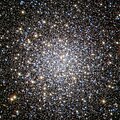 |
Globular cluster | 24.5 | Serpens | 5.6 | 23' | 15h 18m 33.22s | +02° 04′ 51.7″ |
| M6[22] | NGC 6405 | Butterfly Cluster |  |
Open cluster | 1.6 | Scorpius | 4.2 | 25' | 17h 40.1m | −32° 13′ |
| M7[23] | NGC 6475 | Ptolemy's Cluster |  |
Open cluster | 0.65–1.31 | Scorpius | 3.3 | 80' | 17h 53m 51.2s | −34° 47′ 34″ |
| M8[24] | NGC 6523 | Lagoon Nebula | Nebula with cluster | 4.1 | Sagittarius | 4.6 | 90′ × 40′ | 18h 03m 37s | −24° 23′ 12″ | |
| M9[25] | NGC 6333 | – |  |
Globular cluster | 25.8 | Ophiuchus | 7.7 | 9.3' | 17h 19m 11.78s | −18° 30′ 58.5″ |
| M10[26] | NGC 6254 | – |  |
Globular cluster | 14.3 | Ophiuchus | 6.6 | 20' | 16h 57m 8.92s | −04° 05′ 58.07″ |
| M11[27] | NGC 6705 | Wild Duck Cluster |  |
Open cluster | 6.2 | Scutum | 5.8 | 22.8' | 18h 51.1m | −06° 16′ |
| M12[28] | NGC 6218 | – |  |
Globular cluster | 15.7 | Ophiuchus | 6.7 | 16' | 16h 47m 14.18s | −01° 56′ 54.7″ |
| M13[29] | NGC 6205 | Great Hercules Cluster |  |
Globular cluster | 22.2 | Hercules | 5.8 | 20' | 16h 41m 41.24s | +36° 27′ 35.5″ |
| M14[30] | NGC 6402 | – | 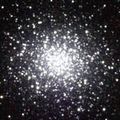 |
Globular cluster | 30.3 | Ophiuchus | 7.6 | 11' | 17h 37m 36.15s | −03° 14′ 45.3″ |
| M15[31] | NGC 7078 | Great Pegasus Cluster |  |
Globular cluster | 33 | Pegasus | 6.2 | 18' | 21h 29m 58.33s | +12° 10′ 01.2″ |
| M16[32] | NGC 6611 | Eagle Nebula |  |
H II region nebula with cluster | 7 | Serpens | 6.4 | 70' x 50' | 18h 18m 48s | −13° 49′ |
| M17[33] | NGC 6618 | Omega, Swan, Horseshoe, Lobster, or Checkmark Nebula |  |
H II region nebula with cluster | 5–6 | Sagittarius | 6.0 | 11' | 18h 20m 26s | −16° 10′ 36″ |
| M18[34] | NGC 6613 | Black Swan Cluster |  |
Open cluster | 4.9 | Sagittarius | 7.5 | 9.8' | 18h 19.9m | −17° 08′ |
| M19[35] | NGC 6273 | – |  |
Globular cluster | 28.7 | Ophiuchus | 6.8 | 17' | 17h 02m 37.69s | −26° 16′ 04.6″ |
| M20[36] | NGC 6514 | Trifid Nebula |  |
H II region nebula with cluster | 5.2 | Sagittarius | 6.3 | 28' | 18h 02m 23s | −23° 01′ 48″ |
| M21[37] | NGC 6531 | Webb's Cross Cluster |  |
Open cluster | 4.25 | Sagittarius | 6.5 | 14' | 18h 04.6m | −22° 30′ |
| M22[38] | NGC 6656 | Great Sagittarius Cluster |  |
Globular cluster | 9.6–11.6 | Sagittarius | 5.1 | 32' | 18h 36m 23.94s | −23° 54′ 17.1″ |
| M23[39] | NGC 6494 | – |  |
Open cluster | 2.15 | Sagittarius | 5.5 | 35' | 17h 56.8m | −19° 01′ |
| M24[40] | IC 4715 | Small Sagittarius Star Cloud |  |
Milky Way star cloud | ~10 | Sagittarius | 2.5 | 2°x1° | 18h 17m | −18° 33′ |
| M25[41] | IC 4725 | – | 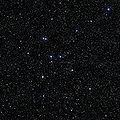 |
Open cluster | 2.0 | Sagittarius | 4.6 | 36' | 18h 31.6m | −19° 15′ |
| M26[42] | NGC 6694 | – |  |
Open cluster | 5.0 | Scutum | 8.0 | 14' | 18h 45.2m | −09° 24′ |
| M27[43] | NGC 6853 | Dumbbell Nebula |  |
Planetary nebula | 1.148–1.52 | Vulpecula | 7.4 | 8.0' × 5.6' | 19h 59m 36.340s | +22° 43′ 16.09″ |
| M28[44] | NGC 6626 | – |  |
Globular cluster | 17.9 | Sagittarius | 6.8 | 11.2' | 18h 24m 32.89s | −24° 52′ 11.4″ |
| M29[45] | NGC 6913 | Cooling Tower Cluster |  |
Open cluster | 7.2 | Cygnus | 7.1 | 7' | 20h 23m 56s | +38° 31′ 24″ |
| M30[46] | NGC 7099 | Jellyfish Cluster | 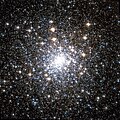 |
Globular cluster | 27.8–31 | Capricornus | 7.2 | 12' | 21h 40m 22.12s | −23° 10′ 47.5″ |
| M31[47] | NGC 224 | Andromeda Galaxy | Spiral galaxy | 2,430–2,650 | Andromeda | 3.4 | 3.167° × 1° | 00h 42m 44.3s | +41° 16′ 09″ | |
| M32[48] | NGC 221 | Andromeda Satellite #1 |  |
Dwarf elliptical galaxy | 2,410–2,570 | Andromeda | 8.1 | 8.7' × 6.5' | 00h 42m 41.8s | +40° 51′ 55″ |
| M33[49] | NGC 598 | Triangulum/Pinwheel Galaxy |  |
Spiral galaxy | 2,380–3,070 | Triangulum | 5.7 | 70.8' x 41.7' | 01h 33m 50.02s | +30° 39′ 36.7″ |
| M34[50] | NGC 1039 | Spiral Cluster |  |
Open cluster | 1.5 | Perseus | 5.5 | 35' | 02h 42.1m | +42° 46′ |
| M35[51] | NGC 2168 | Shoe-Buckle Cluster |  |
Open cluster | 2.8 | Gemini | 5.3 | 28' | 06h 09.1m | +24° 21′ |
| M36[52] | NGC 1960 | Pinwheel Cluster |  |
Open cluster | 4.1 | Auriga | 6.3 | 12' | 05h 36m 12s | +34° 08′ 04″ |
| M37[53] | NGC 2099 | Salt and Pepper Cluster |  |
Open cluster | 4.511 | Auriga | 6.2 | 24' | 05h 52m 18s | +32° 33′ 02″ |
| M38[54] | NGC 1912 | Starfish Cluster |  |
Open cluster | 4.2 | Auriga | 7.4 | 21' | 05h 28m 42s | +35° 51′ 18″ |
| M39[55] | NGC 7092 | Pyramid Cluster |  |
Open cluster | 0.8244 | Cygnus | 4.6 | 29' | 21h 31m 42s | +48° 26′ 00″ |
| M40[56] | – | Winnecke 4 |  |
Optical Double | 0.51 | Ursa Major | 8.4 | 51.7″ | 12h 22m 12.5s | +58° 04′ 59″ |
| M41[57] | NGC 2287 | Little Beehive Cluster |  |
Open cluster | 2.3 | Canis Major | 4.5 | 38' | 06h 46.0m | −20° 46′ |
| M42[58] | NGC 1976 | Great Orion Nebula |  |
H II region nebula | 1.324–1.364 | Orion | 4.0 | 65' x 60' | 05h 35m 17.3s | −05° 23′ 28″ |
| M43[59] | NGC 1982 | De Mairan's Nebula |  |
H II region nebula (part of the Orion Nebula) |
1.6 | Orion | 9.0 | 20' x 15' | 05h 35.6m | −05° 16′ |
| M44[60] | NGC 2632 | Beehive Cluster or Praesepe |  |
Open cluster | 0.577 | Cancer | 3.7 | 95' | 08h 40.4m | +19° 59′ |
| M45[61] | – | Pleiades, Seven Sisters or Subaru | Open cluster | 0.39–0.46 | Taurus | 1.6 | 2° | 03h 47m 24s | +24° 07′ 00″ | |
| M46[62] | NGC 2437 | – |  |
Open cluster | 5.4 | Puppis | 6.0 | 22.8' | 07h 41.8m | −14° 49′ |
| M47[63] | NGC 2422 | – |  |
Open cluster | 1.6 | Puppis | 4.4 | 30' | 07h 36.6m | −14° 30′ |
| M48[64] | NGC 2548 | – |  |
Open cluster | 1.5 | Hydra | 5.5 | 30' | 08h 13.7m | −05° 45′ |
| M49[65] | NGC 4472 | – |  |
Elliptical galaxy | 53,600–58,200 | Virgo | 8.4 | 10.2' × 8.3' | 12h 29m 46.7s | +08° 00′ 02″ |
| M50[66] | NGC 2323 | Heart-Shaped Cluster |  |
Open cluster | 3.2 | Monoceros | 5.9 | 16' | 07h 03.2m | −08° 20′ |
| M51[67] | NGC 5194, NGC 5195 | Whirlpool Galaxy | Spiral galaxy | 19,000–27,000 | Canes Venatici | 8.4 | 11.2′ × 6.9′ | 13h 29m 52.7s | +47° 11′ 43″ | |
| M52[68] | NGC 7654 | Scorpion Cluster | 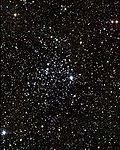 |
Open cluster | 5.0 | Cassiopeia | 7.3 | 13' | 23h 24.2m | +61° 35′ |
| M53[69] | NGC 5024 | – |  |
Globular cluster | 58 | Coma Berenices | 7.6 | 13' | 13h 12m 55.25s | +18° 10′ 05.4″ |
| M54[70] | NGC 6715 | – |  |
Globular cluster | 87.4 | Sagittarius | 7.6 | 12' | 18h 55m 03.33s | −30° 28′ 47.5″ |
| M55[71] | NGC 6809 | Specter Cluster | 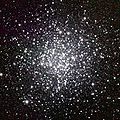 |
Globular cluster | 17.6 | Sagittarius | 6.3 | 19' | 19h 39m 59.71s | −30° 57′ 53.1″ |
| M56[72] | NGC 6779 | – |  |
Globular cluster | 32.9 | Lyra | 8.3 | 8.8' | 19h 16m 35.57s | +30° 11′ 00.5″ |
| M57[73] | NGC 6720 | Ring Nebula |  |
Planetary nebula | 1.6–3.8 | Lyra | 8.8 | 230" × 230" | 18h 53m 35.079s | +33° 01′ 45.03″ |
| M58[74] | NGC 4579 | – |  |
Barred Spiral galaxy | ~63,000 | Virgo | 9.7 | 5.9' × 4.7' | 12h 37m 43.5s | +11° 49′ 05″ |
| M59[75] | NGC 4621 | – |  |
Elliptical galaxy | 55,000–65,000 | Virgo | 9.6 | 5.4' × 3.7' | 12h 42m 02.3s | +11° 38′ 49″ |
| M60[76] | NGC 4649 | – |  |
Elliptical galaxy | 51,000–59,000 | Virgo | 8.8 | 7.4' × 6.0' | 12h 43m 39.6s | +11° 33′ 09″ |
| M61[77] | NGC 4303 | Swelling Spiral Galaxy |  |
Spiral galaxy | 50,200–54,800 | Virgo | 9.7 | 6.5' × 5.8' | 12h 21m 54.9s | +04° 28′ 25″ |
| M62[78] | NGC 6266 | Flickering Globular |  |
Globular cluster | 22.2 | Ophiuchus | 6.5 | 15' | 17h 01m 12.60s | −30° 06′ 44.5″ |
| M63[79] | NGC 5055 | Sunflower Galaxy | Spiral galaxy | 37,000 | Canes Venatici | 8.6 | 12.6' × 7.2' | 13h 15m 49.3s | +42° 01′ 45″ | |
| M64[80] | NGC 4826 | Black Eye Galaxy |  |
Spiral galaxy | 22,000–26,000 | Coma Berenices | 8.5 | 10.7' × 5.1' | 12h 56m 43.7s | +21° 40′ 58″ |
| M65[81] | NGC 3623 | Leo Triplet | Barred Spiral galaxy | 41,000–42,000 | Leo | 9.3 | 8.7' × 2.5' | 11h 18m 55.9s | +13° 05′ 32″ | |
| M66[82] | NGC 3627 | Leo Triplet |  |
Barred Spiral galaxy | 31,000–41,000 | Leo | 8.9 | 9.1' × 4.2' | 11h 20m 15.0s | +12° 59′ 30″ |
| M67[83] | NGC 2682 | King Cobra or Golden Eye Cluster |  |
Open cluster | 2.61–2.93 | Cancer | 6.1 | 30' | 08h 51.3m | +11° 49′ |
| M68[84] | NGC 4590 | – |  |
Globular cluster | 33.6 | Hydra | 7.8 | 11' | 12h 39m 27.98s | −26° 44′ 38.6″ |
| M69[85] | NGC 6637 | – |  |
Globular cluster | 29.7 | Sagittarius | 7.6 | 10.8' | 18h 31m 23.10s | −32° 20′ 53.1″ |
| M70[86] | NGC 6681 | – |  |
Globular cluster | 29.4 | Sagittarius | 7.9 | 8' | 18h 43m 12.76s | −32° 17′ 31.6″ |
| M71[87] | NGC 6838 | Angelfish Cluster |  |
Globular cluster | 13.0 | Sagitta | 8.2 | 7.2' | 19h 53m 46.49s | +18° 46′ 45.1″ |
| M72[88] | NGC 6981 | – |  |
Globular cluster | 53.40–55.74 | Aquarius | 9.3 | 6.6' | 20h 53m 27.70s | −12° 32′ 14.3″ |
| M73[89] | NGC 6994 | – |  |
Asterism | ~2.5 | Aquarius | 9.0 | 2.8' | 20h 58m 54s | −12° 38′ |
| M74[90] | NGC 628 | Phantom Galaxy[91] | 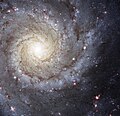 |
Spiral galaxy | 24,000–36,000 | Pisces | 9.4 | 10.5' x 9.5' | 01h 36m 41.8s | +15° 47′ 01″ |
| M75[92] | NGC 6864 | – |  |
Globular cluster | 67.5 | Sagittarius | 8.5 | 6.8' | 20h 06m 04.75s | −21° 55′ 16.2″ |
| M76[93] | NGC 650, NGC 651 | Little Dumbbell Nebula |  |
Planetary nebula | 2.5 | Perseus | 10.1 | 2.7' × 1.8' | 01h 42.4m | +51° 34′ 31″ |
| M77[94] | NGC 1068 | Cetus A or Squid Galaxy |  |
Spiral galaxy | 47,000 | Cetus | 8.9 | 7.1' × 6.0' | 02h 42m 40.7s | −00° 00′ 48″ |
| M78[95] | NGC 2068 | – |  |
Diffuse nebula | 1.6 | Orion | 8.3 | 8' × 6' | 05h 46m 46.7s | +00° 00′ 50″ |
| M79[96] | NGC 1904 | – |  |
Globular cluster | 41 | Lepus | 7.7 | 8.7' | 05h 24m 10.59s | −24° 31′ 27.3″ |
| M80[97] | NGC 6093 | – |  |
Globular cluster | 32.6 | Scorpius | 7.3 | 10' | 16h 17m 02.41s | −22° 58′ 33.9″ |
| M81[98] | NGC 3031 | Bode's Galaxy |  |
Spiral galaxy | 11,400–12,200 | Ursa Major | 6.9 | 26.9' × 14.1' | 09h 55m 33.2s | +69° 03′ 55″ |
| M82[99] | NGC 3034 | Cigar Galaxy |  |
Starburst galaxy | 10,700–12,300 | Ursa Major | 8.4 | 11.2' × 4.3' | 09h 55m 52.2s | +69° 40′ 47″ |
| M83[100] | NGC 5236 | Southern Pinwheel Galaxy | 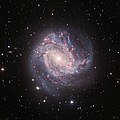 |
Barred Spiral galaxy | 14,700 | Hydra | 7.6 | 12.9' × 11.5' | 13h 37m 00.9s | −29° 51′ 57″ |
| M84[101] | NGC 4374 | – |  |
Lenticular galaxy | 57,000–63,000 | Virgo | 9.1 | 6.5' × 5.6' | 12h 25m 03.7s | +12° 53′ 13″ |
| M85[102] | NGC 4382 | – |  |
Lenticular galaxy | 56,000–64,000 | Coma Berenices | 9.1 | 7.1' × 5.5' | 12h 25m 24.0s | +18° 11′ 28″ |
| M86[103] | NGC 4406 | – |  |
Lenticular galaxy | 49,000–55,000 | Virgo | 8.9 | 8.9' × 5.8' | 12h 26m 11.7s | +12° 56′ 46″ |
| M87[104] | NGC 4486 | Virgo A or Smoking Gun Galaxy |  |
Elliptical galaxy | 51,870–55,130 | Virgo | 8.6 | 7.2' × 6.8' | 12h 30m 49.42338s | +12° 23′ 28.0439″ |
| M88[105] | NGC 4501 | – |  |
Spiral galaxy | 39,000–56,000 | Coma Berenices | 9.6 | 6.9' × 3.7' | 12h 31m 59.2s | +14° 25′ 14″ |
| M89[106] | NGC 4552 | – |  |
Elliptical galaxy | 47,000–53,000 | Virgo | 9.8 | 5.1' × 4.7' | 12h 35m 39.8s | +12° 33′ 23″ |
| M90[107] | NGC 4569 | – |  |
Spiral galaxy | 55,900–61,500 | Virgo | 9.5 | 9.5' × 4.4' | 12h 36m 49.8s | +13° 09′ 46″ |
| M91[108] | NGC 4548 | – |  |
Barred Spiral galaxy | 47,000–79,000 | Coma Berenices | 10.2 | 5.4' × 4.3' | 12h 35m 26.4s | +14° 29′ 47″ |
| M92[109] | NGC 6341 | – | Globular cluster | 26.7 | Hercules | 6.4 | 14' | 17h 17m 07.39s | +43° 08′ 09.4″ | |
| M93[110] | NGC 2447 | Critter Cluster |  |
Open cluster | 3.6 | Puppis | 6.0 | 10' | 07h 44.6m | −23° 52′ |
| M94[111] | NGC 4736 | Crocodile Eye or Cat's Eye Galaxy |  |
Spiral galaxy | 14,700–17,300 | Canes Venatici | 8.2 | 11.2' × 9.1' | 12h 50m 53.1s | +41° 07′ 14″ |
| M95[112] | NGC 3351 | – |  |
Barred Spiral galaxy | 31,200–34,000 | Leo | 9.7 | 3.1' × 2.9' | 10h 43m 57.7s | +11° 42′ 14″ |
| M96[113] | NGC 3368 | – |  |
Spiral galaxy | 28,000–34,000 | Leo | 9.2 | 7.6' × 5.2' | 10h 46m 45.7s | +11° 49′ 12″ |
| M97[114] | NGC 3587 | Owl Nebula |  |
Planetary nebula | 2.03 | Ursa Major | 9.9 | 3.4' × 3.3' | 11h 14m 47.734s | +55° 01′ 08.50″ |
| M98[115] | NGC 4192 | – | Spiral galaxy | 44,400 | Coma Berenices | 10.1 | 9.8' × 2.8' | 12h 13m 48.292s | +14° 54′ 01.69″ | |
| M99[116] | NGC 4254 | St. Catherine's Wheel |  |
Spiral galaxy | 44,700–55,700 | Coma Berenices | 9.9 | 5.4' × 4.7' | 12h 18m 49.6s | +14° 24′ 59″ |
| M100[117] | NGC 4321 | Mirror Galaxy |  |
Spiral galaxy | 55,000 | Coma Berenices | 9.3 | 7.4' × 6.3' | 12h 22m 54.9s | +15° 49′ 21″ |
| M101[118] | NGC 5457 | Pinwheel Galaxy |  |
Spiral galaxy | 19,100–22,400 | Ursa Major | 7.9 | 28.8' × 26.9' | 14h 03m 12.6s | +54° 20′ 57″ |
| M102[119] | NGC 5866 | Spindle Galaxy |  |
Lenticular galaxy | 50,000 | Draco | 9.9 | 4.7' x 1.9' | 15h 06m 29.5s | +55° 45′ 48″ |
| M103[120] | NGC 581 | – |  |
Open cluster | 10 | Cassiopeia | 7.4 | 6' | 01h 33.2m | +60° 42′ |
| M104[121] | NGC 4594 | Sombrero Galaxy | Spiral galaxy | 28,700–30,900 | Virgo | 8.0 | 9' x 4' | 12h 39m 59.4s | −11° 37′ 23″ | |
| M105[122] | NGC 3379 | – |  |
Elliptical galaxy | 30,400–33,600 | Leo | 9.3 | 5.4' × 4.8' | 10h 47m 49.6s | +12° 34′ 54″ |
| M106[123] | NGC 4258 | – |  |
Spiral galaxy | 22,200–25,200 | Canes Venatici | 8.4 | 18.6' × 7.2' | 12h 18m 57.5s | +47° 18′ 14″ |
| M107[124] | NGC 6171 | Crucifix Cluster |  |
Globular cluster | 20.9 | Ophiuchus | 7.9 | 10' | 16h 32m 31.86s | −13° 03′ 13.6″ |
| M108[125] | NGC 3556 | Surfboard Galaxy | Barred Spiral galaxy | 46,000 | Ursa Major | 10.0 | 8.7' × 2.2' | 11h 11m 31.0s | +55° 40′ 27″ | |
| M109[126] | NGC 3992 | Vacuum Cleaner Galaxy | Barred Spiral galaxy | 59,500–107,500 | Ursa Major | 9.8 | 7.6' × 4.7' | 11h 57m 36.0s | +53° 22′ 28″ | |
| M110[127] | NGC 205 | Andromeda Satellite #2 |  |
Dwarf elliptical galaxy | 2,600–2,780 | Andromeda | 8.5 | 21.9' × 11.0' | 00h 40m 22.1s | +41° 41′ 07″ |
Star chart of Messier objects

See also
References
External links
Wikiwand - on
Seamless Wikipedia browsing. On steroids.
